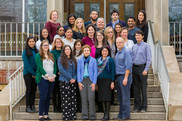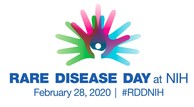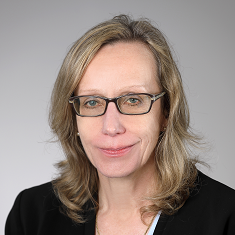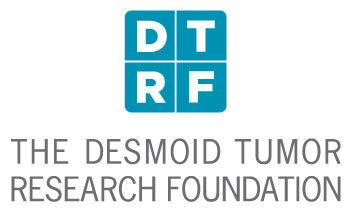|

On January 29th, MyPART team members gathered on the NIH main campus in Bethesda, MD for an all-day retreat to review the progress made on MyPART goals and to brainstorm for future success. The morning session included research talks and was open to NIH researchers and staff outside of MyPART. In addition to staff from MyPART and the Pediatric Oncology Branch, staff from the NCI Center for Cancer Research, Division of Cancer Treatment and Diagnosis, Division of Cancer Epidemiology and Genetics, and the Fredrick National Laboratory for Cancer Research were in attendance.
|

Each year, on the last day of February, rare disease organizations around the world hold events to recognize Rare Disease Day to bring awareness to the public and policymakers about the 300 million people worldwide living with a rare disease. Every year, NIH hosts and celebrates Rare Disease Day at NIH, which brings researchers, patients, families, and advocates together on the main NIH campus in Bethesda, MD to report on research progress and share experiences and resources for the rare disease community. This year, Rare Disease Day at NIH will be held on Friday, February 28th, and MyPART staff will participate in a clinical trials resource room. MyPART will have a table with resources for attendees to learn more about MyPART and about participating in a clinical trial at NIH. The event is free and open to the public. Please stop by the MyPART table to learn more if you will be attending! Read more and register to attend here.
|

“I’ve always been interested in pediatric cancers,” says Dr. Brigitte Widemann, Chief of the Pediatric Oncology Branch and one of the leaders of MyPART. She began her career in Germany, studying medicine at the University of Cologne. Her boss at the time recommended a fellowship in pediatric hematology and oncology at the NIH because it promised protected time for both seeing patients and conducting research. She interviewed in the early 1990s, and the NIH has been her home ever since.
She noticed early on in her training that “very few, if any, clinical trials were being done for these rare conditions, and the ones that were being done, were done poorly” because rarer tumor conditions need different approaches than those that are used in typical pediatric cancers. She committed to improving the design of clinical trials for these conditions, such as neurofibromatosis type 1. Fast forward, and “now we have a clinical trials consortium, we have active clinical trials that use meaningful endpoints and outcome measures, and I would say at least I’ve been a part of getting this machinery working,” Dr. Widemann says. Her research focuses on developing clinical trials to study new treatments for childhood cancers and genetic predisposition syndromes. Recently her team has demonstrated that the MEK inhibitor Selumetinib is able to stop the growth and even reduce the size of tumors in children with neurofibromatosis – the first treatment for this disease, which is expected to receive FDA approval soon.
This focus in part led to the creation of the MyPART Network. Dr. Widemann says that MyPART aims to foster collaboration of clinical researchers with basic researchers in the lab, which will enable them to “seamlessly learn the more basic aspects that are needed to identify better targets and better therapies.” On working at the NIH to do this research, Dr. Widemann says, “I really do feel that there’s no place that I would know where you could better translate something to the clinic without having to think, how can I fund this?”
Still, the research is challenging and often it feels like the progress is not fast enough. But Dr. Widemann is inspired by her patients to keep pushing forward. She explains, “I’ve had patients who have participated in four or five clinical trials that didn’t work, and they didn’t give up, so I don’t give up…For patients, it’s important to know that people are working on it. Every study, if we design it correctly, will give us some information that propels us to the next step.”
She brings her expertise and commitment to the MyPART Network and looks forward to partnering with disease champions to push forward on other rare tumor studies. She says this partnership is so important because, “one person cannot do it all.” The MyPART Network believes this partnership and collaboration among researchers, patients, and advocates is what will accelerate discovery of new treatments for patients with rare tumors.
|

The Desmoid Tumor Research Foundation (DTRF) was founded in 2005 with the goal of fundraising to find a cure for desmoid tumors, a type of rare tumor that grows from connective tissue and can develop anywhere in the body. The organization funds research in basic science and clinical trials. Each year, they host the annual Patient Meeting, which brings patients together to learn about DTRF-funded research efforts and new therapies as well as to network with other community members. In conjunction with the Patient Meeting, they sponsor the annual DTRF International Desmoid Tumor Research Workshop, which facilitates collaboration among researchers and professionals across diverse fields relevant to desmoid tumor research. In 2016, in collaboration with the National Organization for Rare Diseases (NORD), the Foundation launched the first patient registry and natural history study for patients with desmoid tumors. DTRF-funded research includes the creation of the first genetically modified mice that recapitulate the genetics of the disease involving the two most common mutations, which are important for testing new treatments. In 2019, they partnered with The Broad Institute of MIT and Harvard to create a cancer dependency map (a resource for researchers that provides access to large scale datasets and analysis tools) of desmoid tumors using CRISPR gene editing technology. Aside from research efforts, DTRF also provides extensive resources and support for patients and families. Learn more about DTRF here.
Next Advocacy Spotlight: Leiomyosarcoma Support & Direct Research Foundation (LSDRF)
|
|
|
|
|
|